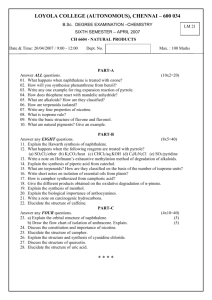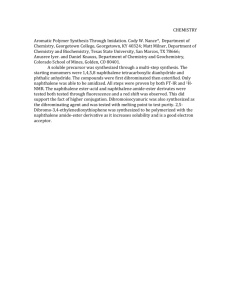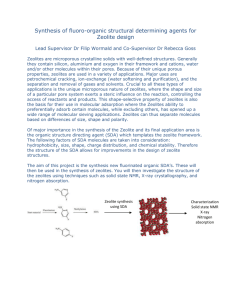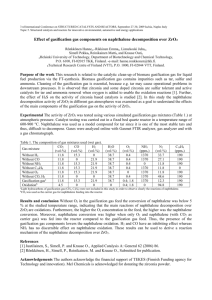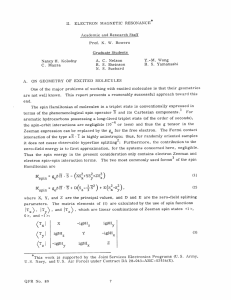Summary
advertisement
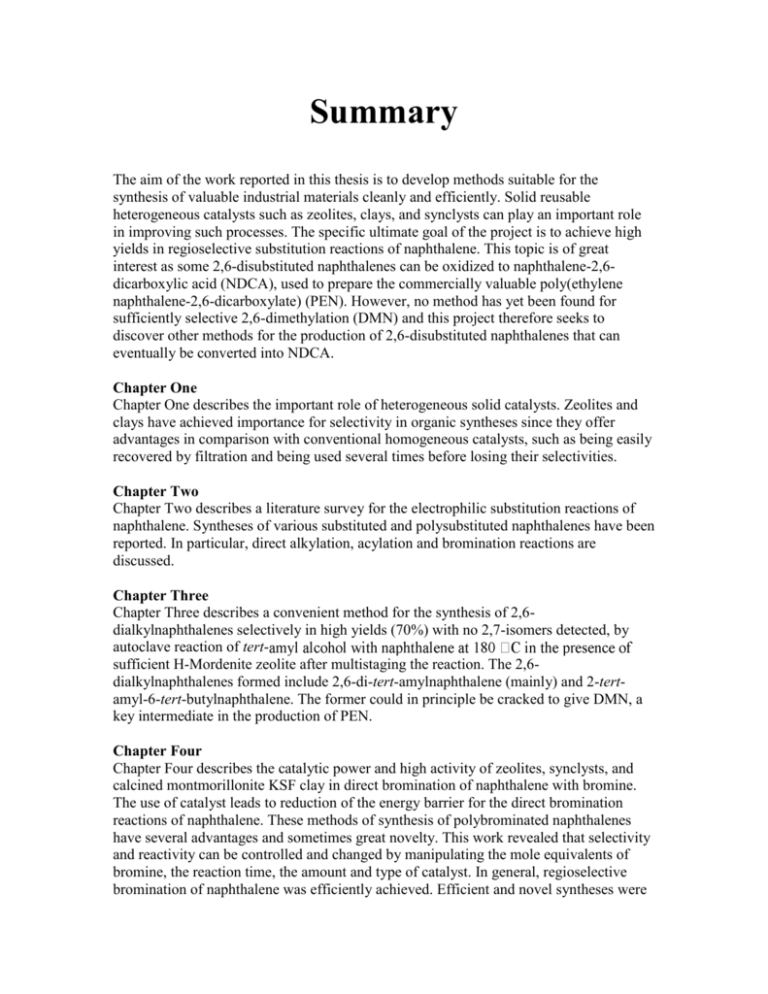
Summary The aim of the work reported in this thesis is to develop methods suitable for the synthesis of valuable industrial materials cleanly and efficiently. Solid reusable heterogeneous catalysts such as zeolites, clays, and synclysts can play an important role in improving such processes. The specific ultimate goal of the project is to achieve high yields in regioselective substitution reactions of naphthalene. This topic is of great interest as some 2,6-disubstituted naphthalenes can be oxidized to naphthalene-2,6dicarboxylic acid (NDCA), used to prepare the commercially valuable poly(ethylene naphthalene-2,6-dicarboxylate) (PEN). However, no method has yet been found for sufficiently selective 2,6-dimethylation (DMN) and this project therefore seeks to discover other methods for the production of 2,6-disubstituted naphthalenes that can eventually be converted into NDCA. Chapter One Chapter One describes the important role of heterogeneous solid catalysts. Zeolites and clays have achieved importance for selectivity in organic syntheses since they offer advantages in comparison with conventional homogeneous catalysts, such as being easily recovered by filtration and being used several times before losing their selectivities. Chapter Two Chapter Two describes a literature survey for the electrophilic substitution reactions of naphthalene. Syntheses of various substituted and polysubstituted naphthalenes have been reported. In particular, direct alkylation, acylation and bromination reactions are discussed. Chapter Three Chapter Three describes a convenient method for the synthesis of 2,6dialkylnaphthalenes selectively in high yields (70%) with no 2,7-isomers detected, by autoclave reaction of tertsufficient H-Mordenite zeolite after multistaging the reaction. The 2,6dialkylnaphthalenes formed include 2,6-di-tert-amylnaphthalene (mainly) and 2-tertamyl-6-tert-butylnaphthalene. The former could in principle be cracked to give DMN, a key intermediate in the production of PEN. Chapter Four Chapter Four describes the catalytic power and high activity of zeolites, synclysts, and calcined montmorillonite KSF clay in direct bromination of naphthalene with bromine. The use of catalyst leads to reduction of the energy barrier for the direct bromination reactions of naphthalene. These methods of synthesis of polybrominated naphthalenes have several advantages and sometimes great novelty. This work revealed that selectivity and reactivity can be controlled and changed by manipulating the mole equivalents of bromine, the reaction time, the amount and type of catalyst. In general, regioselective bromination of naphthalene was efficiently achieved. Efficient and novel syntheses were described for 1,4-di, 1,5-di, 1,4,6-tri, 1,3,5,7-tetra and the new 1,2,4,6-tetrabromonaphthalenes. Chapter Five Chapter Five describes debromination of a mixture of tetrabromonaphthalenes (TBNs) in an attempt to produce 2,6-dibromonaphthalene. The method was successful and has been achieved via selective bromine-lithium exchange of bromo substituents at αpositions. The synthesis of 2,6-dibromonaphtalene (2,6-DBN) via the method reported has several advantages and great novelty, and the 2,6-DBN can be considered as a starting point for the formation of other 2,6-functionalised naphthalenes.
